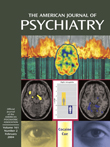Pisa Syndrome and Atypical Antipsychotics
Ms. A, an 82-year-old woman, was admitted with major depressive disorder with psychotic features and demonstrated microangiopathic cerebrovascular disease upon neuroimaging. She had persecutory and referential delusions. At admission, she was taking venlafaxine, 375 mg/day, and lithium, 450 mg/day, in divided doses. Treatment with aripiprazole, 15 mg/day, was initiated with no improvement after 2 weeks of treatment. Ms. A had been given olanzapine, quetiapine, and risperidone before but had developed significant extrapyramidal symptoms, even at small doses. Since she had never been treated with clozapine, it was added at 12.5 mg/day and increased over 9 days to 150 mg/day while aripiprazole was discontinued without a taper. Two days after the increase in her clozapine dose from 100 to 150 mg/day, Ms. A was observed walking with a tilt toward the left. Her physical examination showed tonic flexion of the spine toward the left, along with a slight backward rotation. Her speech was slurred, and she had cogwheel rigidity and tremors. Her mental status was unchanged, and she had no focal neurological deficits. She had no history of scoliosis or idiopathic dystonic syndrome. Ms. A received lorazepam, 2 mg, parenterally once and was given 25 mg b.i.d. of diphenhydramine while her clozapine dose was held steady for the next 3 days and her lithium dose was tapered and stopped. Her dystonia and extrapyramidal symptoms resolved completely within 2 days. However, they reappeared when clozapine was initiated at 75 mg/day while she continued to take diphenhydramine. Clozapine was then discontinued with the resolution of her motor symptoms, and Ms. A was subsequently treated with ECT.
References
Information & Authors
Information
Published In
History
Authors
Metrics & Citations
Metrics
Citations
Export Citations
If you have the appropriate software installed, you can download article citation data to the citation manager of your choice. Simply select your manager software from the list below and click Download.
For more information or tips please see 'Downloading to a citation manager' in the Help menu.
View Options
View options
PDF/EPUB
View PDF/EPUBGet Access
Login options
Already a subscriber? Access your subscription through your login credentials or your institution for full access to this article.
Personal login Institutional Login Open Athens loginNot a subscriber?
PsychiatryOnline subscription options offer access to the DSM-5-TR® library, books, journals, CME, and patient resources. This all-in-one virtual library provides psychiatrists and mental health professionals with key resources for diagnosis, treatment, research, and professional development.
Need more help? PsychiatryOnline Customer Service may be reached by emailing [email protected] or by calling 800-368-5777 (in the U.S.) or 703-907-7322 (outside the U.S.).

